Engagement Ring - In Progress
Setting
Stone
Purchase any Engagement Ring and receive a $250 Gift Card for your Wedding Band. Ends soon.
Deepen the well of love in the world.
We guarantee that every single purchase directly impacts one person's life by giving them access to clean water.
There’s lots of talk about diamond testers lately! From those just learning that Moissanite can “pass” as diamond to teenagers testing their teachers rings (OMG), the intrigue seems pretty universal. But are “diamond testers” all they are cracked up to be? And how can you know what you have on your finger? I’m here to let you in on the inside scoop:
When someone refers to a “diamond tester”, most people mean a handheld “pen” tester that measures a gemstone’s thermal conductivity. In other worse, how a gem handles heat. These testers use a small metal point which, when put on a gem’s surface, measure how quickly heat travels through the stone. People use these to test diamonds because diamonds have super high conductivity.
Diamond testers can be a helpful tool as part of a multi-stage test, but should not be solely relied upon. These little pens are a helpful way to separate out CZ from diamond. But that should be the beginning and end of their use. Why? Because other gems also have high conductivity (such as moissanite) and because the testers themselves notoriously malfunction. Reasons I have seen these testers fail include user error (stones will not test correctly if the point touches metal), low battery, or age/abuse of the pen.
Yes, some diamond simulants can pass a diamond tester. For example, moissanite, a man made gem, may pass as a diamond on a standard tester pen. This is because moissanite also has very high thermal conductivity! Other diamond simulants, such as CZ, will not pass the tester. So, it’s important to use multiple tests to confirm your stone!
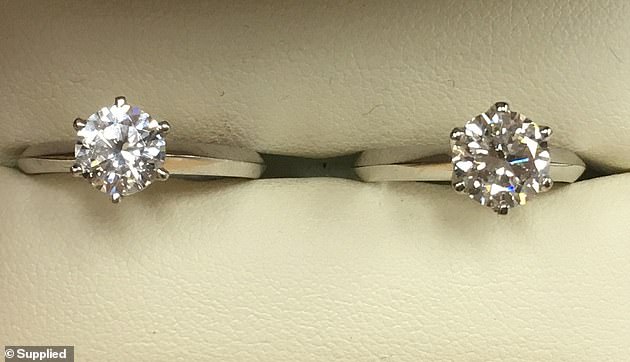
Note the CZ’s (left) lack of depth and “plasticky” reflection vs the Diamond’s (right) multi-tonal shades and crisp reflection?
The major tests jewelers use to tell real diamonds from other white stones are confirming they are singly refractive, have 10/10 hardness, and super high conductivity. Moissanite is doubly refractive under magnification, which easily separates it from diamond. CZ, white sapphire, and white topaz do not have high conductivity using a pen tester. Finally, lesser known diamond simulants do not have high hardness, which can be seen through magnification.
Yes! Rainbow sparkle in a diamond is called “fire”. There is some misinformation out there that diamonds do not show colored light – however this is false. In fact, a diamond’s ability to show a rainbow of color is one of its most prized features, and one of the reasons it is preferred by many over other white stones like white sapphire or white topaz. Moreover, diamonds show a balanced display of rainbow and white sparkle. This should be compared against moissanite and CZ’s major colored sparkle, which outshines its white sparkle.
Typically a lab diamond will test as diamond on a pen tester because they are pure carbon just like mined diamonds. Testing a lab diamond is a little more complicated than testing a natural diamond, however. That is because lab diamonds are grown using differing methods and over differing courses of time. This results in different crystal densities (and thermal conductivity levels). As a result, some lab diamonds (HPHT especially) may test as Moissanite on a diamond tester and require further testing.
Ironically, just like Moissanite can test as diamond, diamond can also test like Moissanite. This is because diamonds have a range of thermal conductivity, depending upon crystal density. This is especially true for HPHT lab diamonds. So, if this happens to you, don’t immediately assume the worst. Again, these pen testers are not foolproof. Here’s what to do:
Lab diamonds can be separated from natural diamonds by reviewing the diamond’s certificate inscription underneath a scope. Lab diamonds will be marked “lab grown” or “LG”, whereas naturals will not have these prefixes. Gem scientists are also be able to tell lab diamonds from natural diamonds using advanced magnification, fluorescence, and laser techniques.
Natural diamonds, lab diamonds, and non-diamond moissanite! This is because a handheld pen “diamond tester” actually only tests the ability of a gem to conduct heat. It does not test for whether or not the stone is, for example, pure carbon (like diamonds are). So, while the pen tester is helpful – it’s only one piece of the puzzle!
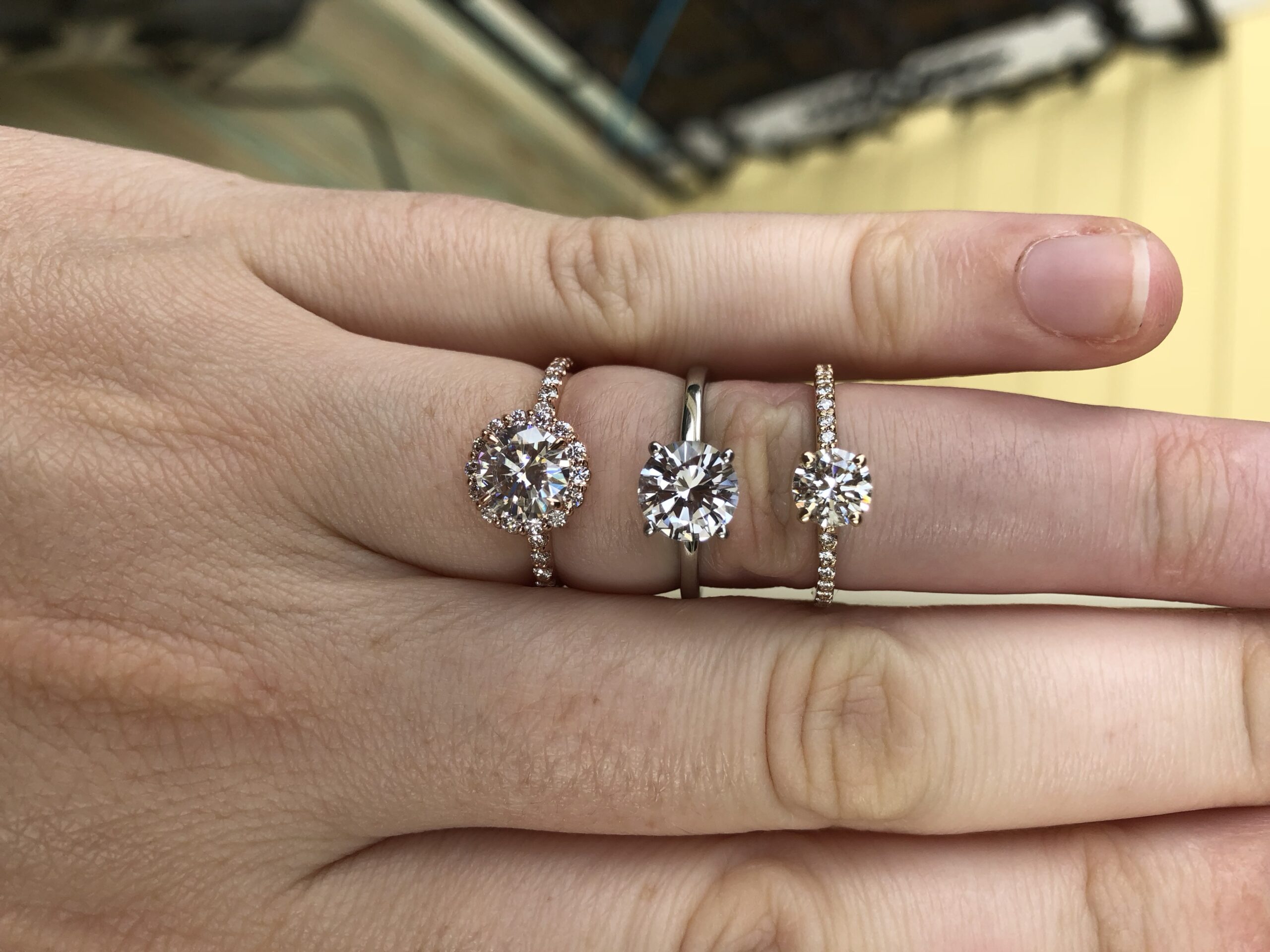
Moissanite (left) vs White Sapphire vs Diamond (right)
Some testers show a moissanite result whereas others test moissanite as diamond. It all depends upon the model of the tester. However, because of the varying levels of diamond thermal conductivity (discussed above) a test as “diamond” or “moissanite” on one of these pens only gives so much information. Once a stone tests as diamond or moissanite on a pen tester, confirming magnification tests should be performed via microscope!
There are pen testers that provide a certain result for moissanite, however, moissanite is best confirmed through viewing “doubling” under magnification. Why? Especially with the growing popularity of HPHT diamonds, which may test as moissanite on a pen tester, viewing doubling under magnification is the easiest way to conclusively separate the two. And it’s easy! Just look through the “crown” facets of the stone under a scope.
There are a few options! If you’re using a pen tester, start there to rule out diamond simulants other than moissanite. Then check for certificate or doubling! Here’s how:

No. Cubic Zirconia (or CZ) does not have high enough thermal conductivity to pass. So, when you test a CZ with a diamond tester, it will not show as diamond. In fact, distinguishing CZ from diamond is one of the most important uses of thermal conductivity pen testers.
Real diamonds test as diamond on thermal conductivity testers and most have microscopic laser inscriptions. Those are the two easiest ways to test between diamond and CZ. More nuanced tests include “pavilion flash” and “heft” – both of these require the stone to be loose. To test for pavilion flash, put your stone point side up and flash a penlight over it. If the stone flashes blue, the stone is likely CZ. And, to test for heft, weigh the stone in your hand. If it feels “too heavy” for its size, it is likely CZ (CZ weighs about twice as much as diamond).
No. White Sapphire does not have high enough thermal conductivity to pass. And, white sapphire looks quite different than diamond, moissanite, and CZ, so using a pen tester is not common. Whereas the high conductivity gems show rainbow sparkle, white sapphire shows white and silver sparkle. It also tends to have a silvery undertone. So, these are often easier ways to spot sapphire from diamond.
Whereas diamond will pass a pen test and have rainbow sparkle, white sapphire will not pass and has white and silver sparkle. Sapphire is usually faceted differently than diamond, as well, with rectangular facets on the bottom of the stone. Finally, more nuanced tests include finding the “refractive index” of the gem. Notably, white sapphire’s refractive index also helps to distinguish white sapphire from white topaz!
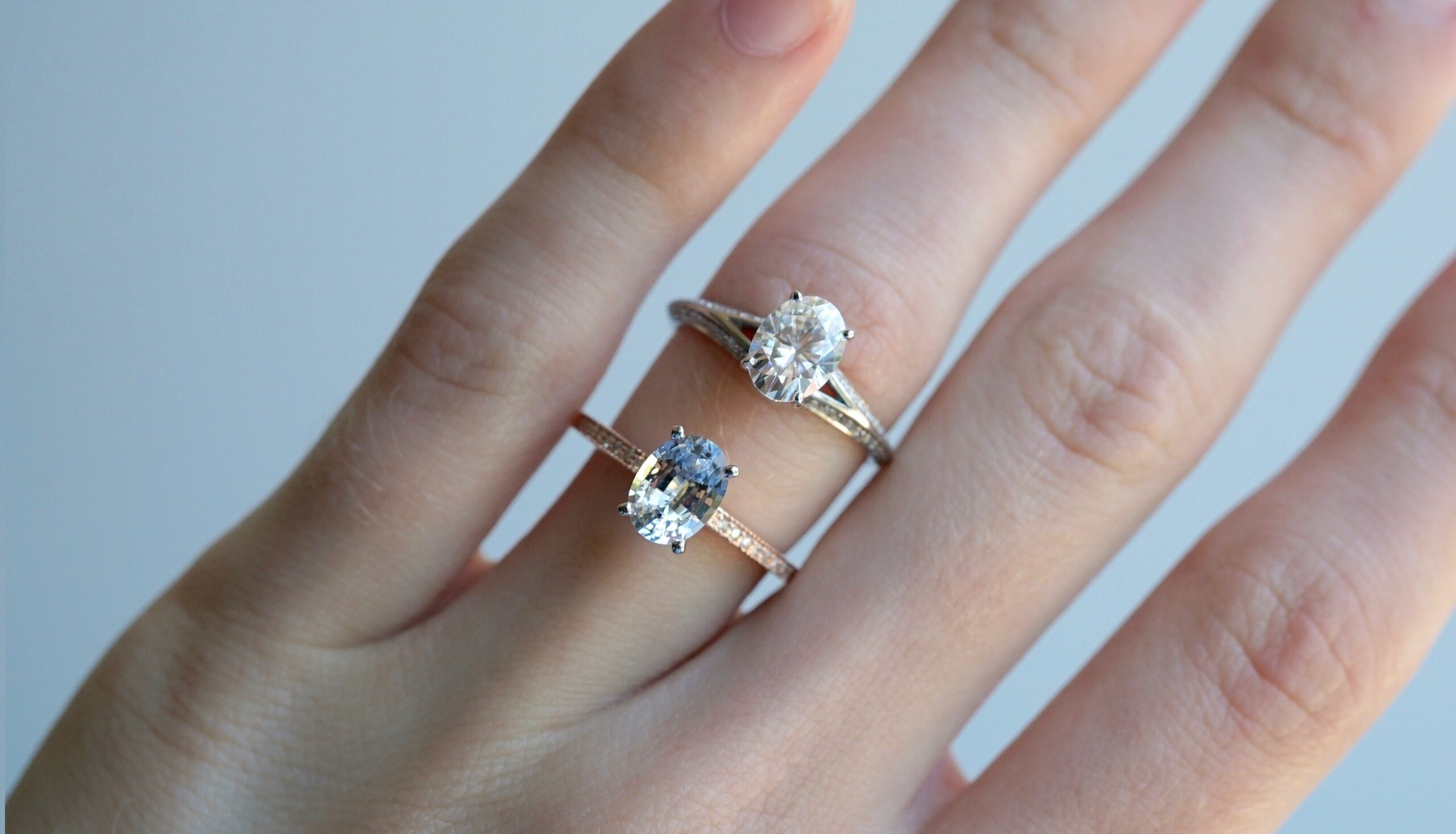
Moissanite (top) vs White Sapphire (bottom) ovals
Sure! While we do not offer appraisal services or gem testing services, if you have questions about why your stone is testing the way it is, I’d be happy to answer them! And, as always, the best way to protect yourself in this once in a lifetime purchase is to choose a reputable jeweler to buy your diamond or moissanite from (hint hint: check out our reviews on Facebook, The Knot and Wedding Wire)!
Verifiably Ethical & Sustainable
Guaranteed 1:1 Impact
Personalized 1:1 Customer Service
handcrafted & american-made
you before us, always
Diamonds, Gemstones, & Metals
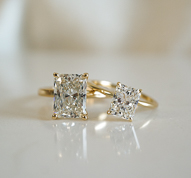
Every piece of Do Amore jewelry begins by not hurting the world. All our natural diamonds are either ethically sourced in Canada, recycled to eliminate additional demand, or accompanied by a blockchain ledger showing every hand your diamond passed through, proving your stone is truly conflict-free.
We also offer sustainable lab-created stones and guarantee all precious metals are recycled to eliminate the environmental impact of mining. Since March 2022, we carry absolutely no Russian diamonds and continue to urge the industry to follow suit.
Clean Water
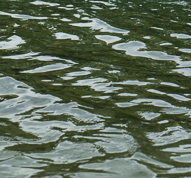
We desire to deepen the well of love in the world. We guarantee that every single purchase—whether engagement ring, wedding band, or piece of jewelry—directly impacts one person’s life by giving them access to clean water.
We do this by directly matching jewelry purchases to people in communities to ensure our funding has a one-to-one impact. We also show you the exact GPS coordinates and a photo of the water well your ring or piece of jewelry helped fund.
Customer Service
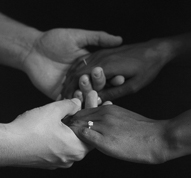
As a small, 100% founder- and employee-owned team, one-to-one encounters are at the heart of our values. Whichever way you want support throughout your engagement ring or jewelry purchase process, our team is here to accommodate you.
From high-touch to hands-off, video calls to text messages, you have our dedicated, responsive team on your side from the moment you start your search, to the day your well is built, to the time we meet again.
Engagement Rings, Bands, & Jewelry
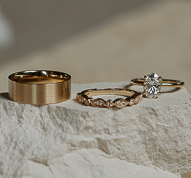
Every Do Amore design, whether one of our own or unique to you, is beautifully handcrafted in America and made specifically for you. Each ring is made to order, every time.
From classic to custom, you have the option to select from dozens of gorgeous settings or work with our design team to create something entirely bespoke. Plus, you are always covered for free inspections, polishing, cleaning, stone tightening, rhodium-plating, and resizing for life.
Our Promise

We care about what matters most to you, not what’s easiest for us. If it’s a minor change to a setting or arriving at a completely custom design, we work to ensure you get precisely what you love.
From statement-making to understated, we have options at any price point. Plus, you always have our team on your side searching to bring you every stone within your specifications. We also offer 30-day returns and a limited lifetime warranty to cover you in the rare event of a manufacturing defect.